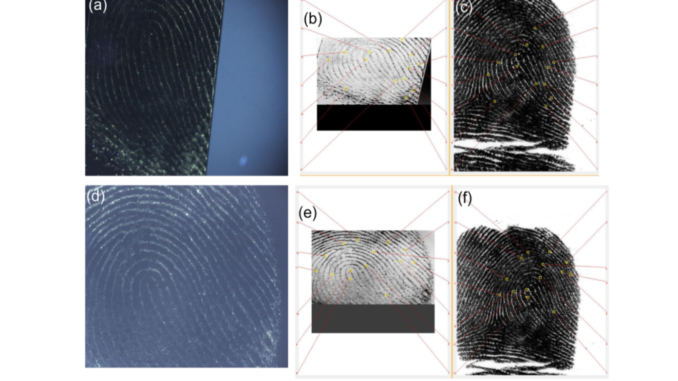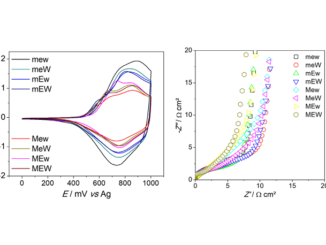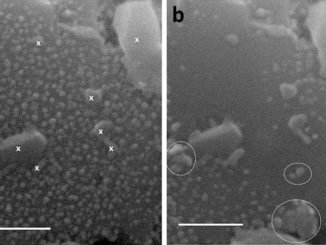
Amorphous Calcium Phosphate Nanoparticles Allow Fingerprint Detection via Self-Activated Luminescence
Abstract: In this work, stable activators-free photoluminescent nanoparticles based on amorphous calcium phosphate (ACP) were obtained for the first time, and their performance for latent fingerprint imaging was investigated. ACP nanoparticles with irregular rounded shape and diameters sized 10-40 nm were prepared by a rapid and simple chemical precipitation, followed by heat treatment at 400 ºC for 4 hours. Diffuse reflectance spectroscopy, photoluminescence excitation and emission measurements revealed a high density of localized energy states within the band gap of heat-treated ACP (Eg = 5.25-5.42 eV). This behavior allowed the excitation of ACP in the near-ultraviolet region (λexc = 450 nm, 2.75 eV), leading to an intense defect-related broadband (490-890 nm) photoluminescence emission centered at 540 nm (2.30 eV), which was 50 times more intense than that of untreated nanoparticles. The effect of both lattice shrinkage due to structural water elimination and the presence of vacancies (VCa and VO in PO43-) and carbonates (CO32-) on the luminescent properties of ACP was discussed in detail and investigated after aqueous-mediated ACP crystallization into hydroxyapatite (HA). ACP nanoparticles were found to be non-cytotoxic, as determined by MTT assay using HDFn cell line, reaching cell viabilities superior to 95% in all tested concentrations (20-320 mg/mL) after an incubation period of 24 and 48 hours. Fingerprint images were obtained using ACP nanoparticles under near-ultraviolet irradiation (λexc = 450 nm) on tweezers and the LCD screen of a smartphone, and then successfully validated by the Integrated Automated Fingerprint Identification System used by the Scientific Police in Spain. The present results evidenced that the new luminescent ACP nanoparticles are safe to be used and agree with the forensic requirements for future legal actions.
Author(s): Thales R. Machado, Jussara S. da Silva, Renata R. Miranda, Valtencir Zucolotto Máximo S. Li, Maria V.M. de Yuso, Juan J. Guerrero-González, Ieda L.V. Rosa, Manuel Algarra and Elson Longo.
Forensic Identification eJournal
16 Feb 2022
DOI: http://dx.doi.org/10.2139/ssrn.4005929
CDMF
The CDMF, hosted at the Federal University of São Carlos (UFSCar), is one of the Research, Innovation and Dissemination Centers (RIDC) supported by the São Paulo State Research Support Foundation (Fapesp), and also receives investment from the National Council Scientific and Technological Development (CNPq), from the National Institute of Science and Technology of Materials in Nanotechnology (INCTMN).




